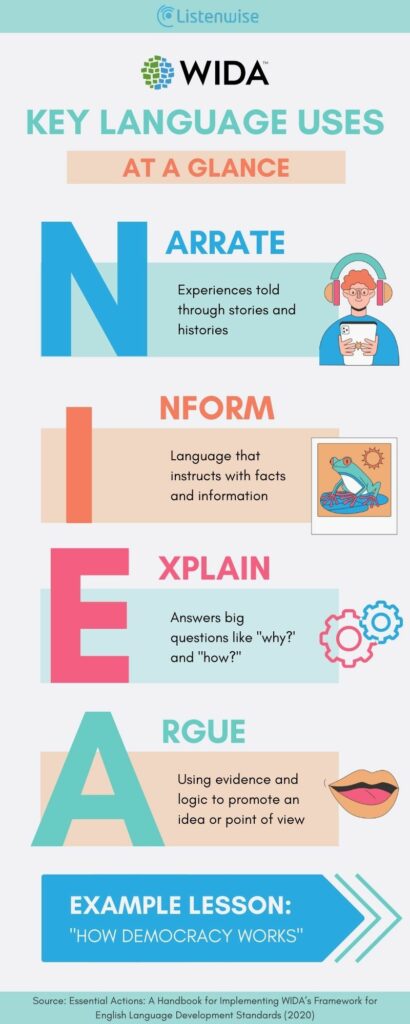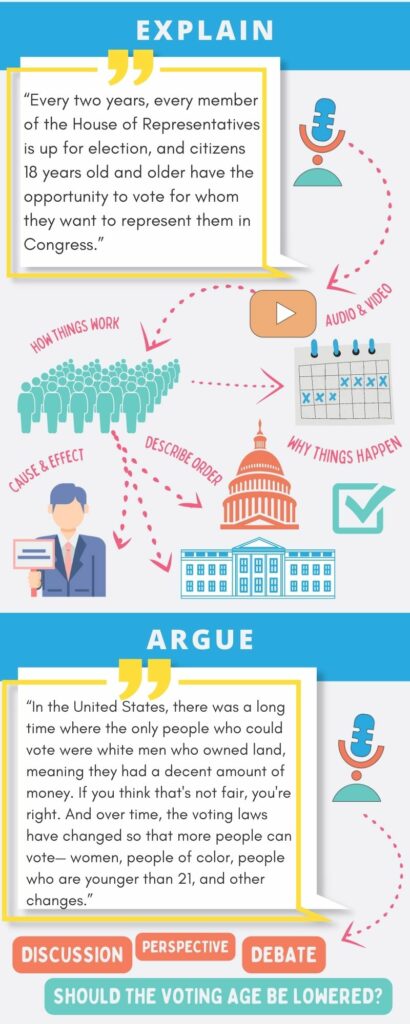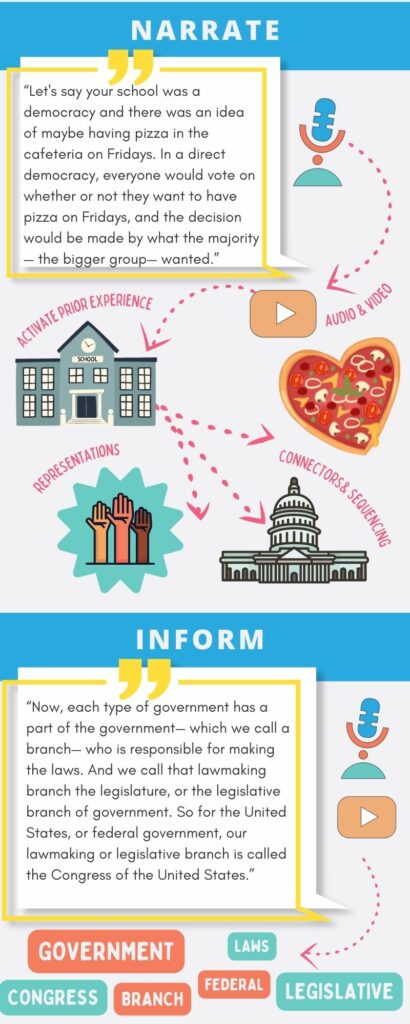Last Updated on December 5, 2024
In order to help prioritize and organize the integration of content and language, WIDA has identified four Key Language Uses:
- Narrate
- Inform
- Explain
- Argue
These provide focus through an increased emphasis on pedagogy that highlights genres as a way of organizing language use.
WIDA’s Key Language Uses also provide a helpful framework for prioritizing academic language development. Each language use (narrate, inform, explain, argue) naturally requires certain types of academic language. Integrating Listenwise’s ELD Lesson Library into teaching these uses along with academic language creates an opportunity to learn language in the context of high-interest content.
Lessons in our ELD Lesson Library include language objectives, which focus on specific language uses and point to opportunities to build language skills related to particular language forms and functions in alignment with content objectives. For example, the language objective for a lesson about forest ecosystems reads, “Students will be able to explain why protecting forests is important.” The language objective for a lesson about Harriet Tubman focuses on narrating: “Students will be able to tell what Harriet Tubman did to help herself and others using past tense verbs.”
Below are infographic examples of how you can use a multimodal lesson from our ELD Lesson Library to develop WIDA’s four key language uses and academic language. While it’s not our expectation that teachers would address all four Key Language Uses in a single lesson, we want to illustrate the potential for using the authentic audio featured in our ELD lessons in teaching a variety of language uses.
WIDA Key Language Uses At a Glance

ELD Lesson Library Example
Here are some passages from the audio story featured in our ELD lesson How Democracy Works that demonstrate different language uses:



